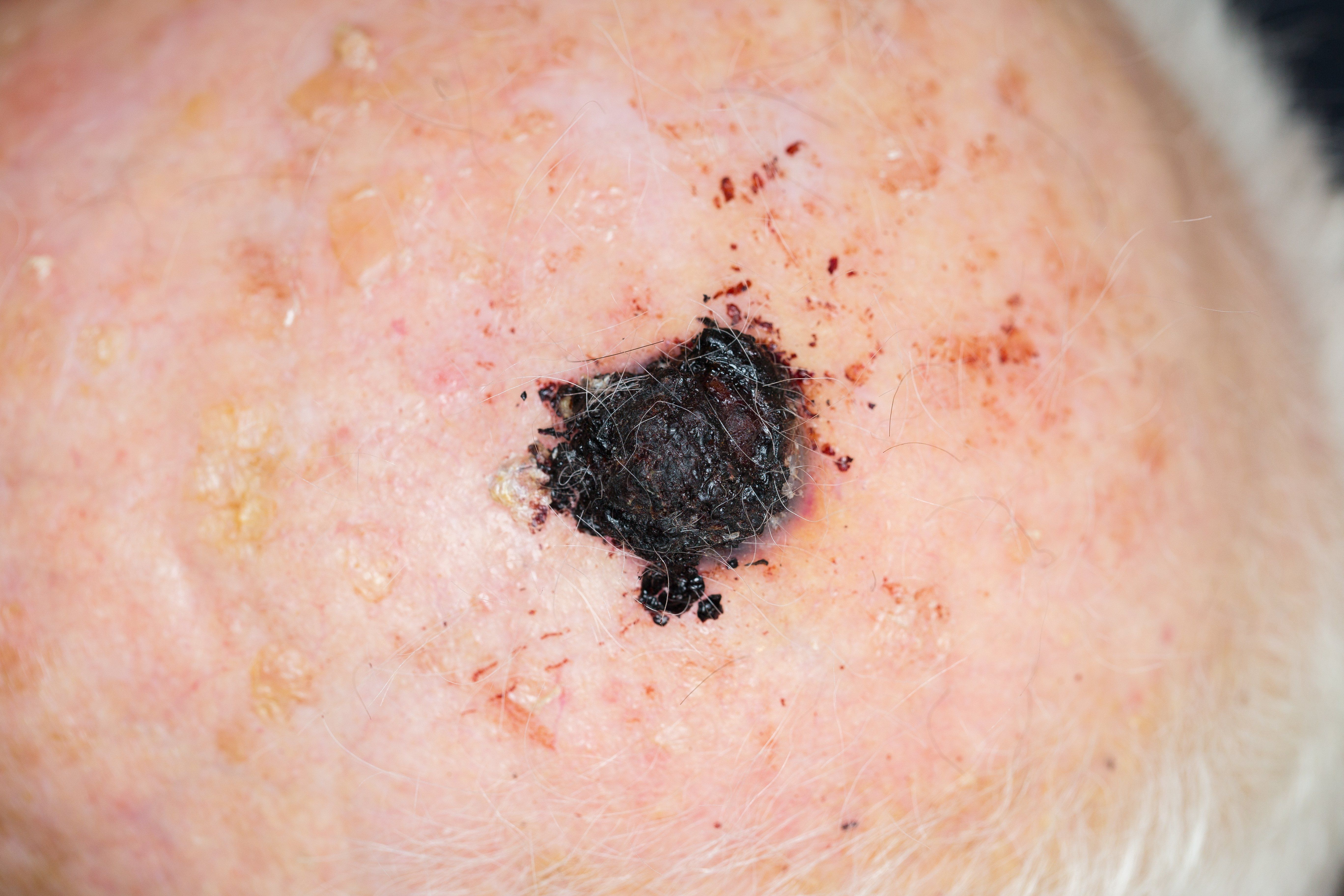- Case-Based Roundtable
- General Dermatology
- Eczema
- Chronic Hand Eczema
- Alopecia
- Aesthetics
- Vitiligo
- COVID-19
- Actinic Keratosis
- Precision Medicine and Biologics
- Rare Disease
- Wound Care
- Rosacea
- Psoriasis
- Psoriatic Arthritis
- Atopic Dermatitis
- Melasma
- NP and PA
- Skin Cancer
- Hidradenitis Suppurativa
- Drug Watch
- Pigmentary Disorders
- Acne
- Pediatric Dermatology
- Practice Management
- Prurigo Nodularis
- Buy-and-Bill
Publication
Article
Dermatology Times
No-cost BRAF test aids therapeutic decision making
Author(s):
Novartis, Quest Diagnostics collaborate on free genetic mutation testing initiative, The Know Now BRAF program, for patients with stage III or stage IV melanoma.
“Knowing the BRAF status of a patient’s tumor allows us to understand which treatment options are available for these patients. It also helps dermatologists to be better prepared for drug reactions or side effects," says Sancy Leachman, M.D., Ph.D. (lavizzara - stock.adobe.com)

Dr. Leachman

Nearly half of all advanced melanoma patients carry the BRAF mutation, and testing for it is a key precision medicine tool to evaluate optimal treatment options, according to Novartis.
RELATED: Melanoma management perspectives vary
The company began a collaboration mid-2019 with Quest Diagnostics to offer free genetic mutation testing for patients with stage III or stage IV melanoma. The Know Now BRAF program provides kits that perform BRAF V600E/K mutation testing. All costs for the testing are covered for eligible patients regardless of whether they test positive or negative for the mutation
WHY DO DERMS NEED TO KNOW?
Dermatologists usually follow stage I and II melanoma patients monitoring for possible recurrence. But they often become part of a multidisciplinary team, co-managing melanoma patients with medical or surgical oncologists once patients progress to stage III or IV, according to Sancy Leachman, M.D., Ph.D., professor and chair of dermatology and director of the Melanoma and Skin Cancer Program at Oregon Health and Science University.
State-of-the-art dermatologic care for melanoma includes management through often toxic treatments and survivorship; following people who need regular skincare and screening even if they have stage III or stage IV disease. And dermatologists should remain actively engaged in and knowledgeable about care for these patients, including treatment, drug reactions and long-term follow-up needs, according to Dr. Leachman.
“Dermatologists need to be actively and intellectually-engaged in the multi-disciplinary team. We aren’t responsible for administering systemic melanoma therapies, but knowing the BRAF status of a patient’s tumor allows us to understand which treatment options are available for these patients. It also helps dermatologists to be better prepared for drug reactions or side effects,” Dr. Leachman says.
Common cutaneous side effects of BRAF inhibitors in the treatment of metastatic melanoma with BRAF V600E mutation include rash, photosensitivity, hand-foot skin reaction, alopecia, pruritis and more, according to a review published in 2016 in Dermatology Research and Practice.1
RELATED: Nanovaccine shows promise for melanoma
Dermatologists are most likely to recommend free BRAF mutation testing through the Know Now program, according to Dr. Leachman, if a dermatology exam demonstrates that a stage I or II melanoma patient has developed progressive disease, or when a survivor, released from surgical or medical oncologic care, exhibits recurrence.
WHAT THE TESTING DOES AND DOESN’T DO
BRAF inhibitors target the common and specific metastatic melanoma mutation V-600.
“This test allows you to know if patients’ tumors have this mutation and will be more likely to respond to a BRAF inhibitor. If they don’t have that mutation, a different class of drug or immunotherapy would be more appropriate,” Dr. Leachman says. “It’s vital that we have that genetic information, but the problem is that not every insurance company wants to pay, and not every patient has insurance.”
The Know Now Testing Program takes care of cost concerns for testing. And the downstream benefit for patients and research quality is that this particular test might help standardize testing.
Standardization can lead to quality assurance and more comparable results for research studies, according to Dr. Leachman.
RELATED: What's new In melanoma treatment?
But it is important to recognize that the test in the Know Now Testing Program is not a germline test that predicts risk of developing a melanoma or familial risk for melanoma, according to Dr. Leachman. This is a somatic genetic test that determines whether a melanoma has developed a BRAF mutation as part of the progression to malignancy.
“This test is testing the tumor - the melanoma, itself. And it only tests for BRAF,” she says. “It’s a very targeted genetic test for a very specific gene that has an important purpose, which is to direct the therapy that the patient is going to get. It is a precision medicine tool.” Â






